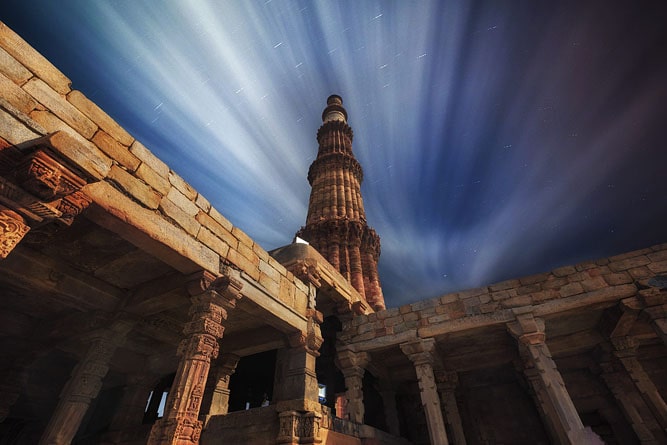Qutb Minar
Historical monument in Delhi
must-see attraction
Opening hours: dawn-dusk
Address: Mehrauli, Delhi
Ticket price: Indian/foreigner ₹40/600
Visit duration: People typically spend 1 to 1.5 hours here
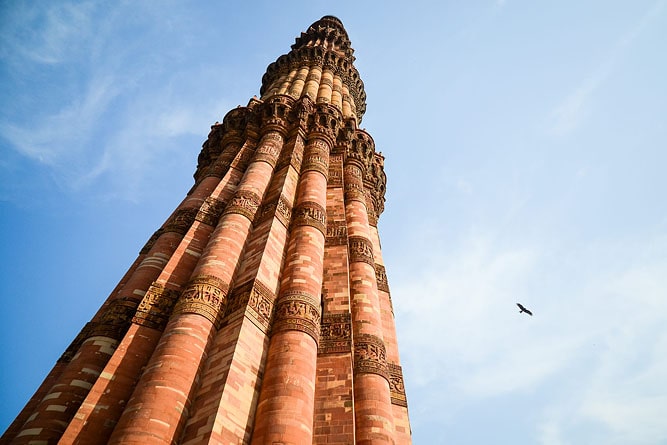
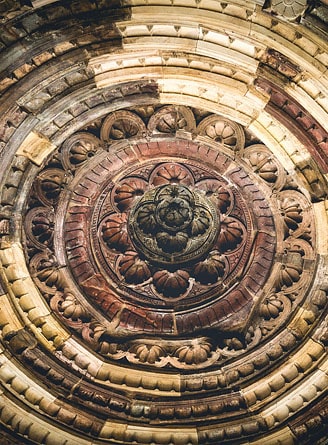
About Qutb Minar, Delhi
Qutb Minar (Qutub Minar), also known as the “Victory Tower”, is located in South Delhi. It is the tallest tower in the world that is made from bricks.
The features of the minaret were highly influenced by the predominating Indic temple architecture which distinguishes it from the other Islamic structures. The tower marks the introduction of Islamic and Persian architecture on Indian soil. Qutb Minar is one of the earliest monuments that notes the synthesis of Islamic and Indian artwork.
The tower was enlisted as a world heritage site by UNESCO in 1993.
History of Qutb Minar
The construction of the minaret began in 1192. It holds a section of the Qutb complex. After the death of Muhammad of Ghor, the founder of the Islamic rule in the Indian subcontinent, the construction of the minaret began by Qutb-Ud-din-Aibak, the first ruler of the dynasty.
The plinth of the minaret was completed in Aibak’s lifetime. Shamsuddin IItutmish, the successor and son-in-law, developed three more storeys of the minaret and completed the architecture.
A lightning strike in the 14th century sabotaged the top storey of the minaret which was repaired by Firuz Shah Tughlaq, a contemporary ruler. He also added another storey to the minaret. Sher Shah Suri constructed the entrance to the minaret.
The Qutb Minar was damaged twice by earthquakes. Once in the 16th century, when Sikandar Lodi repaired it and again in the 19th century during British rule. An officer of the British Indian Army took on the responsibility to mend the minaret.
The 800-year-old tower chronicles its story of repairment through the inscription of Persian-Arabic and Nagaric carved on the exterior wall.
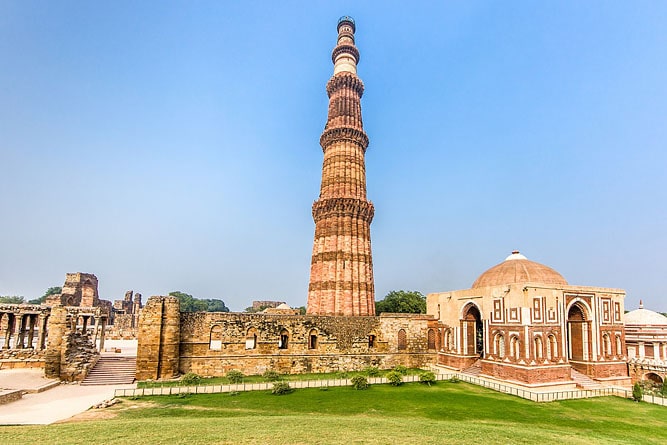
Architecture of Qutb Minar
The Qutb Minar is 238 feet tall. The minaret comprises five storeys and is tilted by 65 centimetres. The spiral staircase of the tower has 379 steps. The Quwwat-ul-Islam mosque is located beside the tower.
The Qutb Minar is circular. The diameter of the plinth is 47 feet. The diameter of the tower reduces with the increase of its height. The diameter at the top of the tower is 9 feet. Each storey can be distinguished by a protruding balcony and flanges and Muqarnas corbels.
The tower is built of red and grey sandstones along with marble stones. While the first three storeys are completely built with red sandstones, the fourth and the fifth storeys are made with marble stone and sandstones. The wall of the minaret has geometric designs and Islamic calligraphies.
There are twelve semi-circular and twelve edgy pilasters positioned in alternating order that runs through every storey. The plinth is the only storey that has inscriptions which are verses from the Quran. It also has most carvings of Persian designs and patterns.
The wall of the plinth is carved with twelve pointed stars and its edgy angles are connected by semicircular figures. The second, third and fourth are made of patternless white marble surfaces. The height of the fourth wall was reduced and the fifth storey was developed which is separated by Muqarnas corbels.
The minaret was constructed by Hindu workers. The minaret was designed by Islamic architects. The Arabic symbols were new to the craftsmen so the collection of the Quranic verses is in disarranged order.
The construction of the Qutb Minar was profoundly affected by the materials, techniques and decoration pre-existing in the Indian Subcontinent.
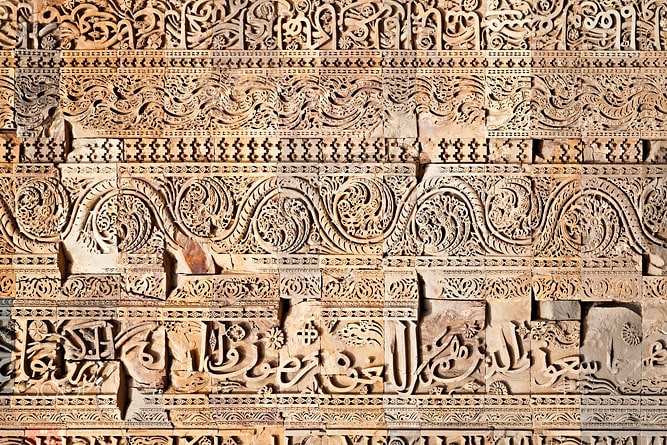
Entry fee and timings
The visiting time for Qutb Minar is from 7:00 am to 9:00 pm. The tower is open for tours every day. The price of the entry ticket is ₹40 for Indian visitors and ₹600 for foreign tourists.
Facts and tips about Qutb Minar
- The first mosque to be built on Indian soil was the Quwwat-Ui-Islam, which is settled closest to the minaret.
- The minaret is said to have been named after a 13th-century Sufi saint, Qutbuddin Bakhtiar Kaki. Shamsuddin IItutmish was the saint’s devotee.
- After the 19th century earthquake, Major Robert Smith instilled a cupola along with the repairmen, which made the minaret six-storeyed high. Later it was disassembled from the minaret and positioned on the ground on the east side of the tower on the order of Viscount Hardinge, the then Governor-General of India. It is known as the ‘Smith’s Folly.’
- The architecture of the Chand Minar and mini Qutb Minar was inspired by the structure of the Qutb Minar.
- Local hawkers and markets near the Qutb complex are the perfect places to shop if you are looking to buy souvenirs.
- If you are looking to take aesthetic pictures for yourself and your friends and families then the regal and ancient ruins and the gardens provide a scenic background for photographs.
- If you are visiting on hot days then wear sandals instead of shoes as the humid climate will make your feet sweaty. Also, carry an umbrella or a hat to protect yourself from the heat.
How to reach Qutb Minar
Qutb Minar is situated in the south of Delhi, 20 minutes by car from the Lotus Temple. It takes between 30 and 45 minutes to drive to Qutb Minar from Humayun's Tomb or Connaught Place.
See location on Google Maps
Other attractions near Qutb Minar
- Lotus Temple - 10 km
- Humayun's Tomb - 13 km
- Connaught Place - 17 km
- Jama Masjid - 19 km
- Red Fort (Lal Qila) - 19 km
FAQs about Qutb Minar
1. Can we enter inside the Qutb Minar tower?
No, we cannot enter inside the Qutb Minar tower. Due to numerous suicide attempts and safety measures, visitors are not allowed to climb the stairs of Qutb Minar.
2. What is the best time to visit the Qutb Minar?
It is better to visit during the cooling seasons of Delhi, but if you want to visit it during the summer days then it would be better to go in the early morning or late evenings.
3. Is food allowed on the premises of the minaret?
No, food is not allowed on the premises of the minaret but you are allowed to carry water with you. There are many restaurants near the site to dine at.
4. When is the Qutb festival held?
The Qutb festival is held in the winter months of November and December.
